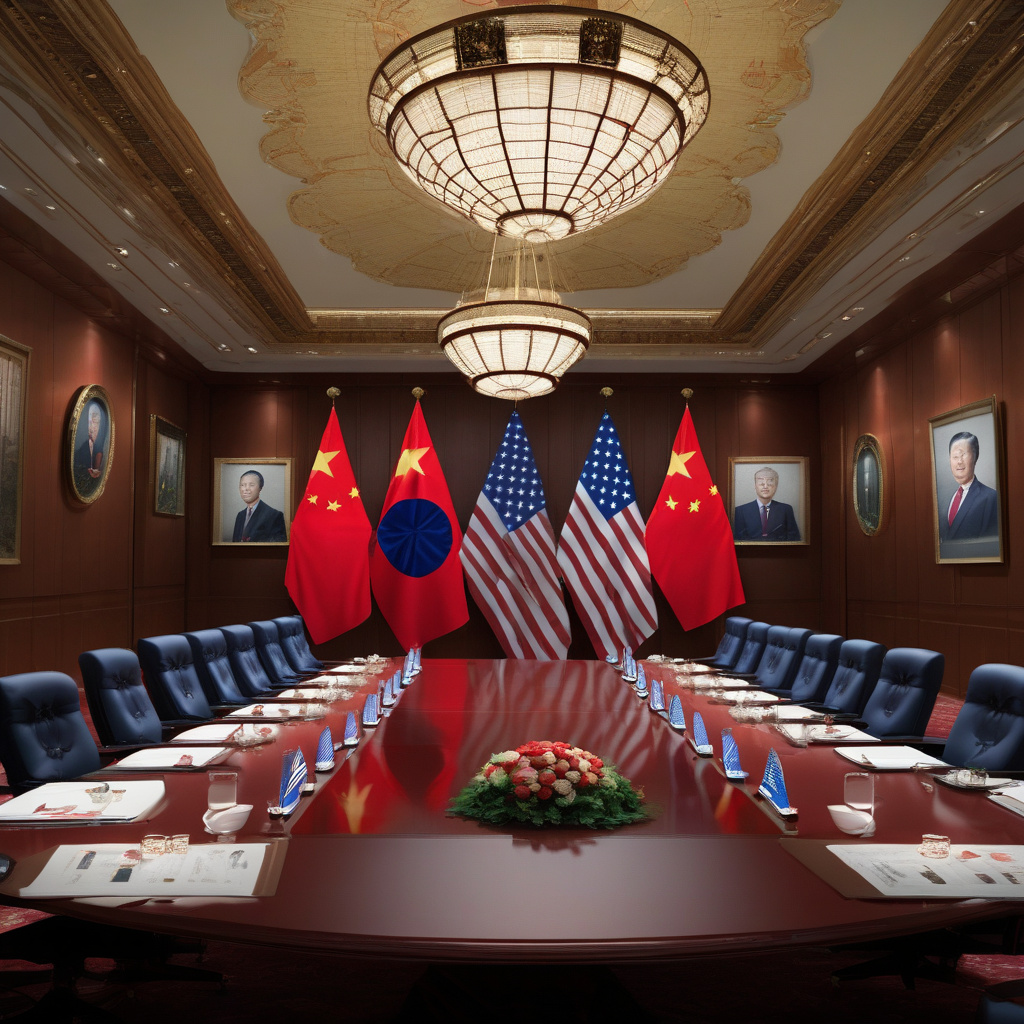Trump, Xi Set to Formalise Trade Truce After Months of Chaos
In a significant development for global markets, U.S. President Donald Trump and Chinese President Xi Jinping are reportedly finalizing a trade truce after months of tumultuous negotiations and escalating tensions. Initial signals suggest that the two leaders are preparing to agree on a pact that could lead to the rollback of tariffs, fees, and export restrictions that have caused considerable disruption to international trade and economic stability.
The trade relationship between the United States and China has been fraught with challenges, particularly since the onset of the tariff war that began in 2018. Each country has imposed billions of dollars in tariffs on goods from the other, creating a ripple effect that has impacted various sectors, including agriculture, manufacturing, and technology. The uncertainty surrounding these tariffs has stifled investment decisions and hampered growth prospects for businesses on both sides.
However, recent communications from the Trump administration and Chinese officials indicate a willingness to reach a compromise. Reports suggest that the proposed agreement may involve the U.S. scaling back some of the tariffs imposed on Chinese imports, which have previously surged to as high as 25%. In exchange, China is expected to increase its purchases of U.S. agricultural products, a key demand from the American side that aims to alleviate the burden on American farmers who have been severely affected by the trade war.
The implications of such a trade truce are significant. A reduction in tariffs would not only relieve financial pressure on U.S. consumers and businesses but also foster a more favorable environment for economic growth. For instance, American companies that have faced inflated costs for intermediate goods due to tariffs could see their profit margins improve, potentially leading to increased hiring and investment in innovation. Additionally, a more stable trade environment could enhance investor confidence, encouraging capital inflows into both economies.
China, on the other hand, stands to benefit from this truce through expanded access to the U.S. market. The agreement could facilitate a more predictable trading landscape, which is essential for Chinese exporters who have been grappling with the repercussions of tariffs. By committing to increase purchases of U.S. agricultural products, China would also be addressing domestic food security concerns while mending relations with American farmers.
Moreover, this trade pact could have far-reaching effects beyond the U.S.-China relationship. As the world’s two largest economies, their trade dynamics significantly influence global supply chains and economic performance. A trade truce could signal to other nations that cooperation is possible, potentially leading to a more harmonious global trade environment. Countries that rely heavily on exports to both the U.S. and China, such as those in Southeast Asia, may find renewed opportunities for growth and collaboration.
Despite these positive developments, challenges remain. Both leaders face domestic pressures that could complicate the finalization of any agreement. President Trump has to navigate a politically charged environment leading up to the 2024 presidential election, where he will need to demonstrate tangible benefits from any trade deal to his voter base. Meanwhile, President Xi is also under scrutiny as he seeks to maintain stability and growth in a slowing Chinese economy.
In addition, skepticism about the longevity of any agreement persists. Previous negotiations have often fallen apart due to misunderstandings or changing political landscapes. For instance, in 2019, a preliminary trade deal collapsed, leading to a resurgence of tariffs and heightened tensions. Therefore, while the current signals are promising, stakeholders should remain cautious and monitor developments closely.
Ultimately, the potential trade truce between Trump and Xi represents a crucial step toward stability in the global economy. As both leaders work to formalize their pact, the world watches closely, hoping that this moment can pave the way for a more cooperative and prosperous future. The rollback of tariffs and mutual concessions could not only ease economic tensions but also foster a more collaborative relationship between the U.S. and China, benefiting businesses and consumers alike.
As we look ahead, the implications of this trade truce will extend beyond immediate economic benefits. It may also serve as a framework for addressing other contentious issues that have plagued U.S.-China relations, such as technology transfer, intellectual property rights, and geopolitical tensions in the Asia-Pacific region. A successful agreement could lay the groundwork for a more strategic partnership, ultimately shaping the future of international trade.
In conclusion, while challenges remain on the road to finalizing a trade truce, the willingness of both President Trump and President Xi to engage in dialogue is a positive sign. By rolling back tariffs and implementing a mutually beneficial agreement, both nations can work towards a more stable economic future.
trade, Trump, Xi, tariffs, business
